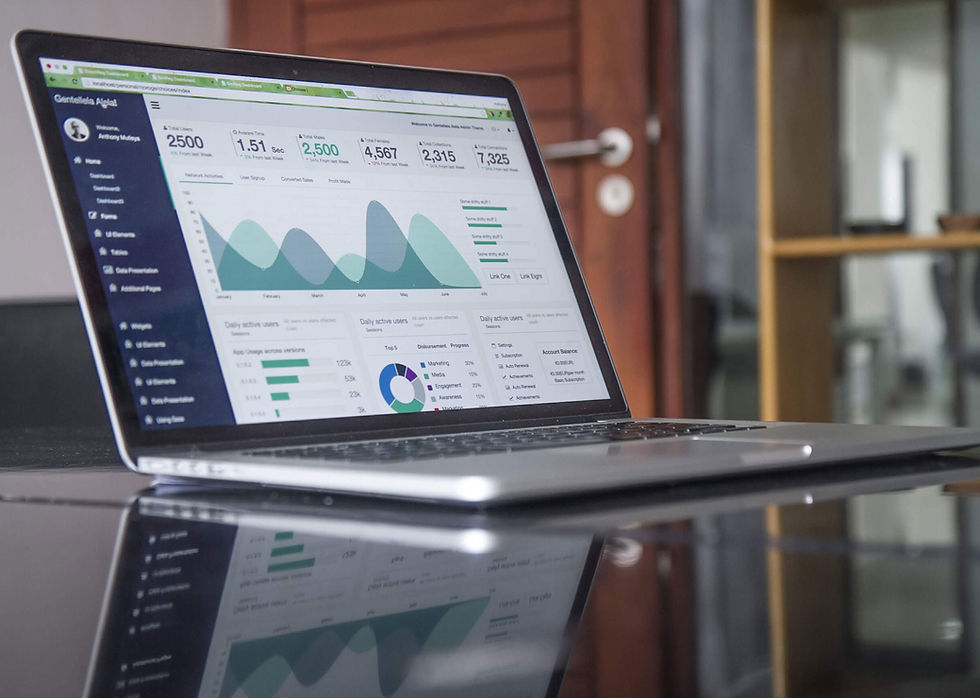Why Profit Tracking Is Key in Dropshipping
- Arthur Wienhausen
- 27. Nov. 2023
- 3 Min. Lesezeit
Aktualisiert: 2. Feb. 2024
Have you ever wondered about the impressive figures dropshipping YouTubers talk about? $100K a month... $2,000,000 this year...
These numbers represent revenue, not profit. In the end, that doesn't determine success. You can generate millions in revenue and still end up losing money.
To determine your profits, you can use a Google sheet, or you automate the process with some of the available tools.

What you will learn in this blog?
What you need to track your profits
How to track them
How to detect products with high returns early
How to focus on the right Numbers and be successful
1. What you need to track your profits
Profit tracking is not as simple as you might think. As a dropshipper, you encounter various expense categories, including Payment Provider Fees, Product Cost, Taxes, Advertising Cost, and Operational Expenses.
Payment Provider fees vary based on your chosen payment provider and include both fixed and percentage fees. Product costs are typically negotiated with your supplier or are visible in the provided sourcing tool.
Operational expenses can become complicated as they are not directly linked to your sales. These include Shopify subscription fees, customer support costs, domain expenses, and any additional fixed payments.
On top there are refunds and chargebacks, both difficult to track, since the shopify dashboard is not showing chargebacks.

2. How to track them
All of this makes the calculations complicated within a Google Sheet. For beginners with just one product, it is still recommended to use it since it's free and provides an initial understanding of your business expenses.
To track payment provider fees, we recommend using a percentage fee slightly higher than the highest fee you pay to avoid falling into the trap of thinking you're profitable when you're not.
As soon as you scale a bit or have multiple products running, it makes sense to automate profit tracking. There are many tools available, such as XProfit, TrueProfit, and BeProfit. These tools not only offer live profit tracking but also provide deeper insights into each product, including refund rates and more.
However, TrueProfit and BeProfit can get expensive, charging around 35 cents per order plus $25 a month, potentially reaching up to $200 a month. We recommend XProfit because it does not charge per order and comes with a fixed price of $18.99. It is also the only profit tracker optimized for dropshippers. Additionally, it can check your supplier invoice to see if you have been overcharged

3. How to detect products with high returns early
If you use a Google Sheet, it's almost impossible. The workload would be too much, depending on the number of products you test and sell.
For this, you should use a Profit Tracker. XProfit not only shows you the refund rate but also provides a forecasted refund rate, alerting you early if a product has quality issues. TrueProfit and BeProfit do not offer this feature.
If you observe a high refund rate, you should immediately search for an alternative version of the product with better quality or consider stopping its sale.
Selling a low-quality product can have serious consequences with payment providers that may ultimately lead to the end of your business.


4. How to focus on the right Numbers and be successful
Of course, the ultimate number you want to improve is the profit, not the revenue. However, to enhance this metric, you should understand the correlation with other metrics. If you have a high ROAS (3.5 and higher), it may be a good idea to scale the ad spend and see how it impacts your profits.
If you observe a high refund rate, you should consider stopping the sale of that product or finding an alternative. If you sell more of an item, you should renegotiate your product costs to secure a discount from your supplier.
It's recommended to periodically review all your expenses and ask yourself how to improve them.



コメント